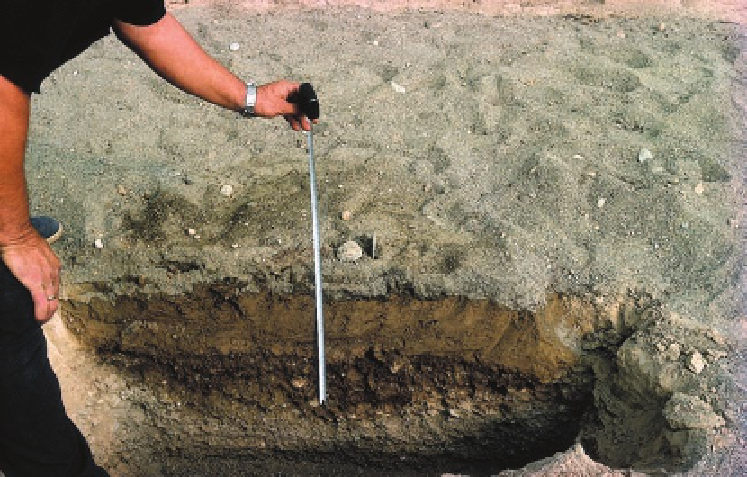Agriculture Reference
In-Depth Information
automated facilities (pump controllers) and
are convenient in all types of facilities in
order to provide precise information on the
amount of water supplied. The most usual
features that are automated are the irrigation
controllers (which manage solenoid valves
at a distance) and the volumetric valves.
attained with a suitable irrigation schedule.
This requires a good knowledge of the crop
water requirements.
The wet soil volume reduction achieved
with drip irrigation may generate a corre-
sponding adaptation of the root system and
induce nutrient limitations in the crop; it is
therefore highly recommended that fertilizer
is incorporated in the water with drip irriga-
tion. The small diameter of the emitters and
the slow water flux lead to the accumulation
of materials that can potentially cause par-
tial or total blockages. It is therefore neces-
sary to filter the water properly and to avoid
blockages by means of preventative mainte-
nance and/or by injecting different chemical
products (e.g. nitric, phosphoric or sulfuric
acid, for pH adjustment; or special chemi-
cals for microbial control) depending on the
type of expected blockages.
11.6.3
Management of drip irrigation
Characteristic features of drip irrigation
systems, although not exclusive to them,
are high-frequency irrigation and localized
water supply directed to only a part of the
potential root zone of the crop (Vermeiren
and Jobling, 1980). They are the most com-
mon form of high-frequency localized irri-
gation (HFLI) systems, and require different
management to that of surface or micro-
sprinkler systems.
Good management of drip irrigation
requires a proper knowledge of the water
and salts movements (affected by the slow
and localized supply of small water vol-
umes) to avoid salination of the root zone
on the long term and to achieve, especially
in areas where water is a scarce resource,
efficient water use, which will only be
with drip irrigation
The movement of water and salts and distri-
bution patterns in the soil with drip irriga-
tion are of great importance (Photo 11.3),
not only for the selection of the type of
Photo 11.3.
Knowledge of the characteristics of water movement (a sandy soil is shown) is of great
interest for ideal management of high-frequency localized irrigation systems.

